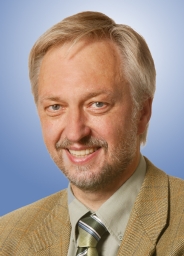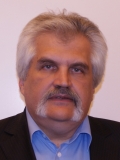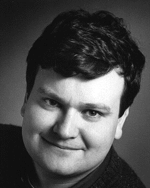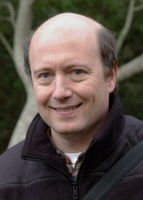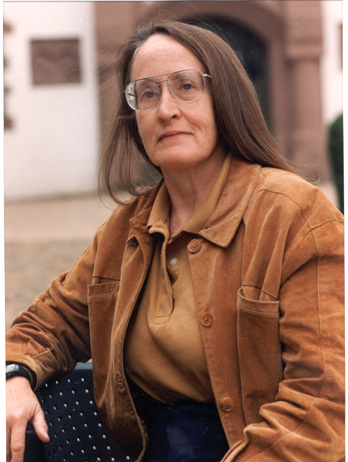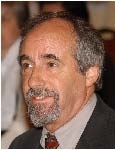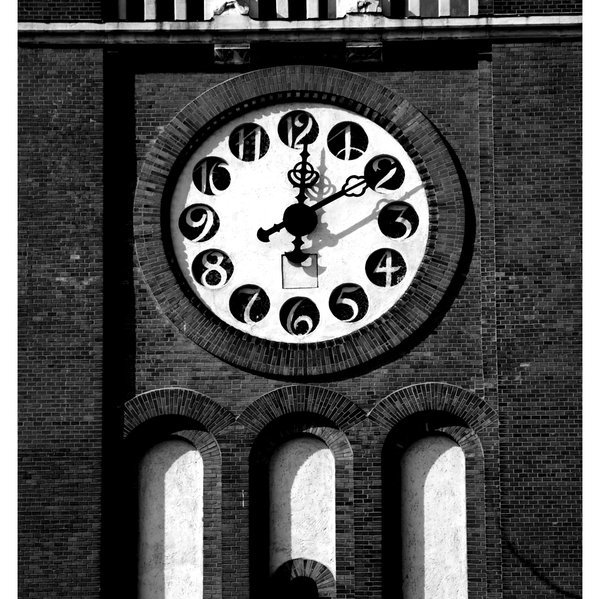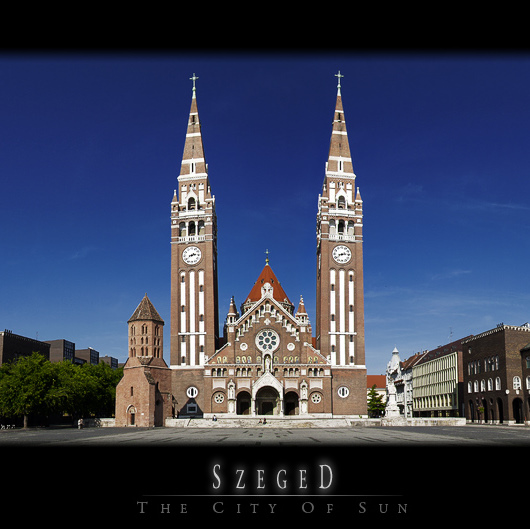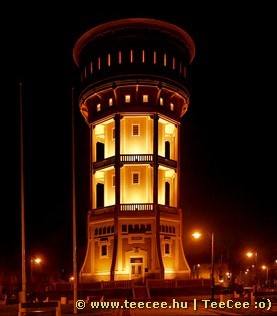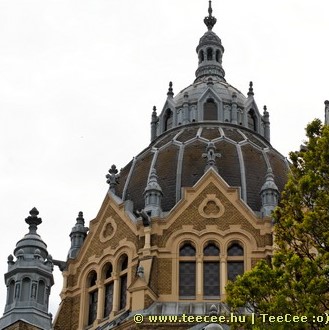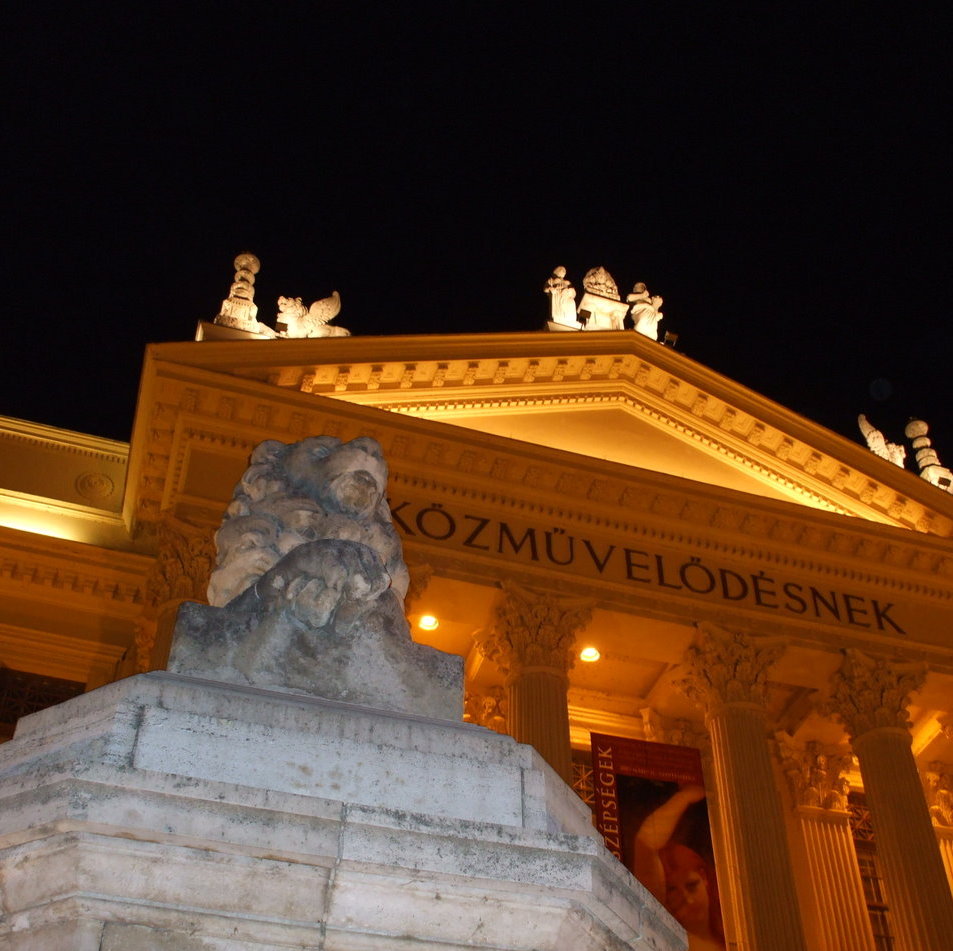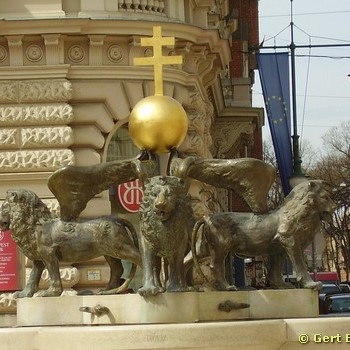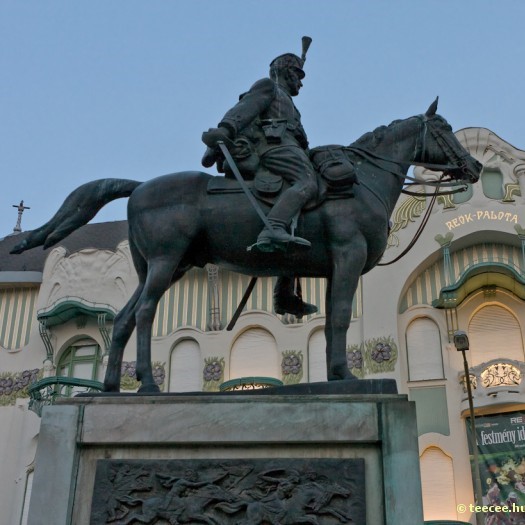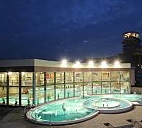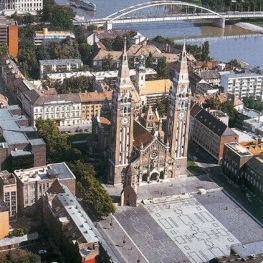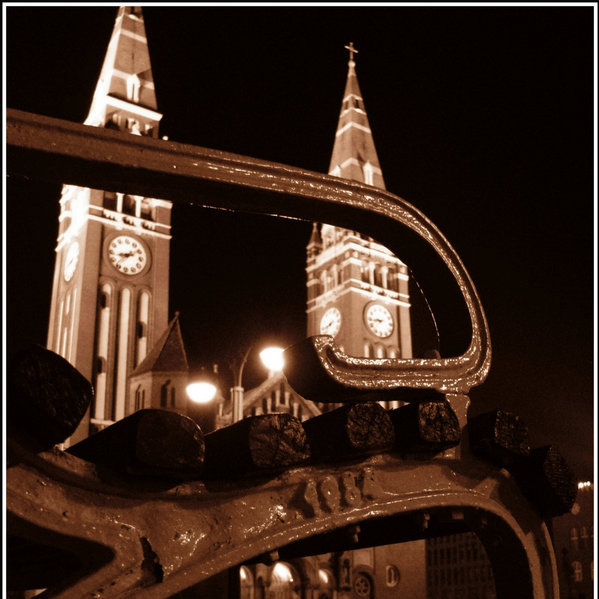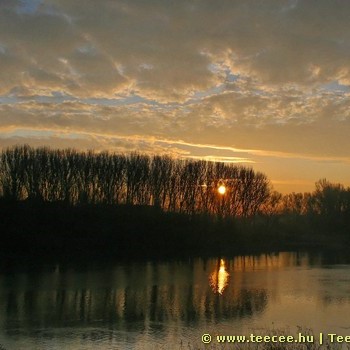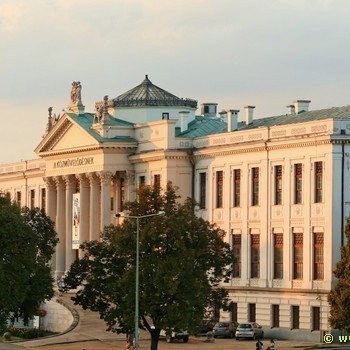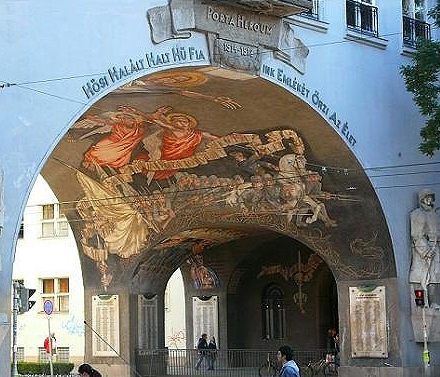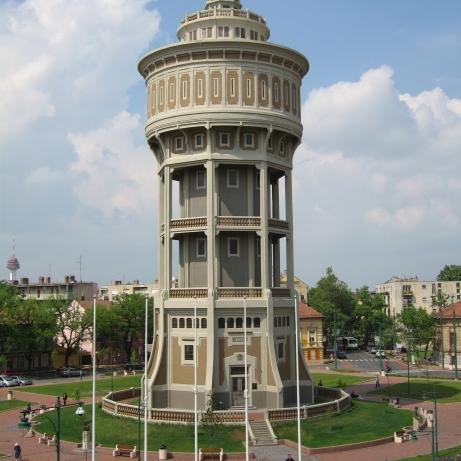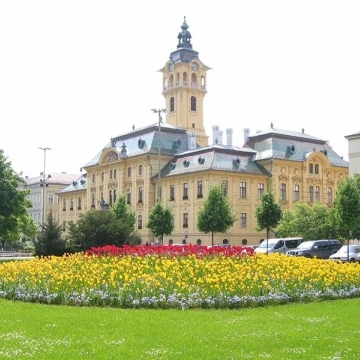Sep 7, Wednesday, 9:30, Congress Hall
Building Advanced Mechatronic Systems
Wilhelm Schäfer
University of Paderborn, Germany
Sep 8, Thursday, 9:00, Congress Hall
ELI-ALPS - The Ultrafast Challenges in Hungary
Gábor Szabó
University of Szeged, Hungary
Sep 8, Thursday, 9:45, Congress Hall
ACM SIGSOFT Impact Paper Award
Ten Years of Interface Automata
Thomas A. Henzinger
University of California, Berkeley, USA
Luca de Alfaro
University of California, Santa Cruz, USA
Sep 9, Friday, 9:00, Congress Hall
ACM SIGSOFT Outstanding Research Award
Software Architecture: Reflections on an Evolving Discipline
Mary Shaw
Carnegie Mellon University, USA
David Garlan
Carnegie Mellon University, USA
Building Advanced Mechatronic Systems
Wilhelm Schäfer
University of Paderborn, Germany
Abstract
Mechatronics is the engineering discipline concerned with the construction of systems incorporating mechanical, electronical and information technology components. Typical examples of mechatronic systems are automotive applications, e.g. advanced braking systems, fly/steer-by-wire or active suspension techniques, but also DVD-players or washing machines. Mechatronic systems are characterised by a combination of basic mechanical devices with a processing unit monitoring and controlling it via a number of actuators and sensors. This leads to massive improvements in product performance and flexibility. The introduction of mechatronics as a tight integration of mechanical, electronical and information-driven units allowed for turning conventionally designed mechanical components into smart devices.
Today we see the first steps in the emergence of the next generation of mechatronic systems. While ''intelligence'' in the behaviour has so far always been achieved by gathering information (and reacting to it) from the one single machine, the usage and retrieval of information in the future will be characterised by an exchange of information between different machines. This can for instance already be seen in the automotive and rail domain:
Intelligent lighting systems combine information about their environment obtained from their own sensors with those collected by other cars. In the Paderborn rail system shuttles autonomously form convoys as to reduce air resistance and optimise energy consumption.
In the talk we survey current state of the art in the development of mechatronic systems from a software engineering point of view. Based on identified weaknesses of existing approaches we present our own approach called Mechatronic UML. Mechatronic UML supports model-driven development of mechatronic systems addressing complex coordination between system components under hard real-time constraints and reconfiguration of control algorithms at runtime to adjust the system behaviour to changing system goals as well as target platform specific code generation. Modelling is based on a syntactically and semantically rigorously defined and partially refined subset of UML. It uses a slightly refined version of component diagrams, coordination patterns, and a refined version of state charts including the notion of time which are called Real time state charts. Verification of safety properties is based on a special kind of compositional model checking to make it scalable. Model checking exploits an underlying unifying semantics which is formally defined using graph transformation systems. The last part of the talk is devoted to pointing out future developments and research challenges which we believe characterise advanced mechatronic systems of the future.
Bio
Dr. Wilhelm Schäfer, born August 16th 1954, got his PhD degree 1986 in the area of software engineering from the University of Osnabrück, Germany. 1986 -1987 he spent as a Visiting Assistant Professor at McGill University Montreal, Canada. From 1986 to 1990 he was head of research and development at STZ company for Software Technology ltd., Dortmund. From 1991 to 1994 he was Associate Professor, Department of Computer Science, University of Dortmund. Since 1994 he is full professor and chair, head of Software Engineering Group, Department of Computer Science, University of Paderborn. Prof. Schäfer is also the chair of the International Graduate School of the University of Paderborn and deputy chair of the collaborative research centre (CRC 614 Self-Optimization in Mechanical Engineering). He was and is member of many national and international program committees in software engineering. He was a member of the IEEE Transactions on Software Engineering Editorial Board, PC-Chair of the 5th European Software Engineering Conference (ESEC), Barcelona in 1995, PC Co-Chair of the 23rd International Conference on Software Engineering in Toronto in 2001 and General Chair of the 30th International Conference on Software Engineering in Leipzig in 2008. Since 2010 he is Co-Director of the newly founded Fraunhofer group on Mechatronic System Design in Paderborn and also serves as Vice-President Research of the University of Paderborn since 2003.
His main research interests are in Model-based Development of Embedded and Mechatronic Systems, Re-Engineering and Software Process Modeling as well as Version- and Configuration Management.
ELI-ALPS - The Ultrafast Challenges in Hungary
Gábor Szabó
University of Szeged, Hungary
Abstract
The ELI – Extreme Light Infrastructure – or as it is commonly referred to: the SUPERLASER will be one of the large research facilities of the European Union. ELI will be built with a joint international effort to form an integrated infrastructure comprised of three branches. The ELI Beamline Facility (Prague, Czech Republic) will mainly focus on particle acceleration and X-ray generation, while the ELI Nuclear Physics Facility (Magurele, Romania) will be dealing with laser-based nuclear physics as well as high field physics. In the talk we introduce the ELI Attosecond Light Pulse Source (ELI-ALPS) to be built in Szeged, Hungary.
The primary mission of the ELI-ALPS Research Infrastructure is to provide the international scientific community with a broad range of ultrafast light sources, especially with coherent XUV and X-ray radiation, including single attosecond pulses. Thanks to this combination of parameters never achieved before, energetic attosecond X-ray pulses of ELI-ALPS will enable recording freeze-frame images of the dynamical electronic-structural behaviour of complex atomic, molecular and condensed matter systems, with attosecond-picometer resolution. The secondary purpose is to contribute to the scientific and technological development towards generating 200 PW pulses, being the ultimate goal of the ELI project. ELI-ALPS will be operated also as a user facility and hence serve basic and applied research in physical, chemical, material and biomedical sciences as well as industrial applications.
The Facility will be built by the end of 2015 from a budget exceeding 240M€. The building and the IT infrastructure, from high speed internal networking, remote controlled system alignment, targetry and data aquisition through laser and radiation safety tools until security systems, will challenge the state of the art of similar research facilities.
Bio
Gábor Szabó received his MS and PhD degrees in physics from JATE University, Szeged, Hungary, in 1978 and 1981, respectively. From 1978 to the present he has been working at University of Szeged where he has been a full professor in the Department of Optics and Quantum Electronics since 1994. Since 2010 he has been the rector of the University of Szeged. He has also visited scientists at both Max Planck Institute, Göttingen, Germany, and Rice University, Houston, Texas. Dr. Szabó is a member of the Hungarian Physical Society, he is the chairman of the Hungarian Association for Innovation, and has been a member of Hungarian Academy of Sciences since 2010. His research activities include photoacoustic spectroscopy, ultrafast laser spectroscopy, generation of femtosecond pulses, nonlinear optics, optimum control of quantum systems, medical applications of lasers.
ACM SIGSOFT Impact Paper Award
Ten Years of Interface Automata
Thomas A. Henzinger
University of California, Berkeley, USA
Luca de Alfaro
University of California, Santa Cruz, USA
We survey the last decade's research on interface automata and related formalisms, with special emphasis on nonfunctional aspects of interfaces (real time, power consumption) and on the automatic synthesis of software component interfaces.
Thomas A. Henzinger is President of IST Austria (Institute of Science and Technology Austria) and Adjunct Professor of Electrical Engineering and Computer Sciences at the University of California, Berkeley. He holds a Dipl.-Ing. degree in Computer Science from Kepler University in Linz, Austria, an M.S. degree in Computer and Information Sciences from the University of Delaware, and a Ph.D. degree in Computer Science from Stanford University (1991). He was Assistant Professor of Computer Science at Cornell University (1992-95), Assistant Professor (1996-97), Associate Professor (1997-98), and Professor (1998-2004) of Electrical Engineering and Computer Sciences at the University of California, Berkeley. He was also Director at the Max-Planck Institute for Computer Science in Saarbruecken, Germany (1999) and Professor of Computer and Communication Sciences at EPFL in Lausanne, Switzerland (2004-09). His research focuses on modern systems theory, especially models, algorithms, and tools for the design and verification of reliable software, hardware, and embedded systems. His HyTech tool was the first model checker for mixed discrete-continuous systems. He is an ISI highly cited researcher, a member of Academia Europaea, a member of the German Academy of Sciences (Leopoldina), a member of the Austrian Academy of Sciences, a Fellow of the ACM, a Fellow of the IEEE, and the recipient of an ERC Advanced Investigator Grant.
Luca de Alfaro is a pr ofessor of Computer Science at the University of California, Santa Cruz.
ACM SIGSOFT Outstanding Research Award
Software Architecture: Reflections on an Evolving Discipline
Mary Shaw
Carnegie Mellon University, USA
David Garlan
Carnegie Mellon University, USA
Abstract
Software Architecture emerged in the 1990’s as an important sub-field of software engineering. While good architectural design had long been recognized as critical to the success of any complex software system, before then the practice of architecting had relied largely on ad hoc, uncodified, and idiosyncratic techniques and knowledge. By the 2000’s the field had matured to the point where there were widely-recognized taxonomies of architectural patterns, techniques for formally representing and analyzing architectures, methods for reviewing an architectural design, widespread adoption of architectural product lines and composition frameworks, and techniques for ensuring conformance between an architecture and an implementation of it. In this talk we reflect on the key enablers of a discipline of software architecture that led to these advances, the central ideas that form its core, and its enduring principles that continue to shape the field of software engineering. We consider both the important concepts on which it builds, as well as those that have built on top of it. Finally, we examine some of the important new trends and challenges that are likely to have an impact on how software architecture will evolve in the future.
Bio
Mary Shaw is the Alan J. Perlis University Professor of Computer Science at Carnegie Mellon University, where she has been a member of the faculty since completing her PhD in 1972. Her research interests lie in the area of software engineering and software systems, particularly software architecture, end user software engineering, cybersociotechnical systems, and software design. She is co-author of "Software Architecture: Perspectives on an Emerging Discipline" and is considered to be one of the founders of the field of software architecture . She has received the ACM SIGSOFT Outstanding Research AWARD, the IEEE Computer Society TCSE's Distinguished Educator Award, CSEE&T's Nancy Mead Award for Excellence in Software Engineering Education, the Stevens Award, and the Warnier Prize. She is a fellow of the Association for Computing Machinery (ACM), the Institute for Electrical and Electronics Engineers (IEEE) and the American Association for the Advancement of Science (AAAS), and she is a member of IFIP WG 2.10 on Software Architecture. She is a past member of the National Research Council's Computer Science and Telecommunications Board and the Defense Advanced Research Project Agency’s Information Science and Technology Board.
David Garlan is a Professor of Computer Science and Director of Software Engineering Professional Programs in the School of Computer Science at Carnegie Mellon University. He received his Ph.D. from Carnegie Mellon in 1987 and worked as a software architect in industry between 1987 and 1990. His interests include software architecture, self-adaptive systems, formal methods, and cyber-physical systems. He is considered to be one of the founders of the field of software architecture, and, in particular, formal representation and analysis of architectural designs. He is a co-author of two books on software architecture: "Software Architecture: Perspectives on an Emerging Discipline", and "Documenting Software Architecture: Views and Beyond." In 2005 he received a Stevens Award Citation for “fundamental contributions to the development and understanding of software architecture as a discipline in software engineering.”

